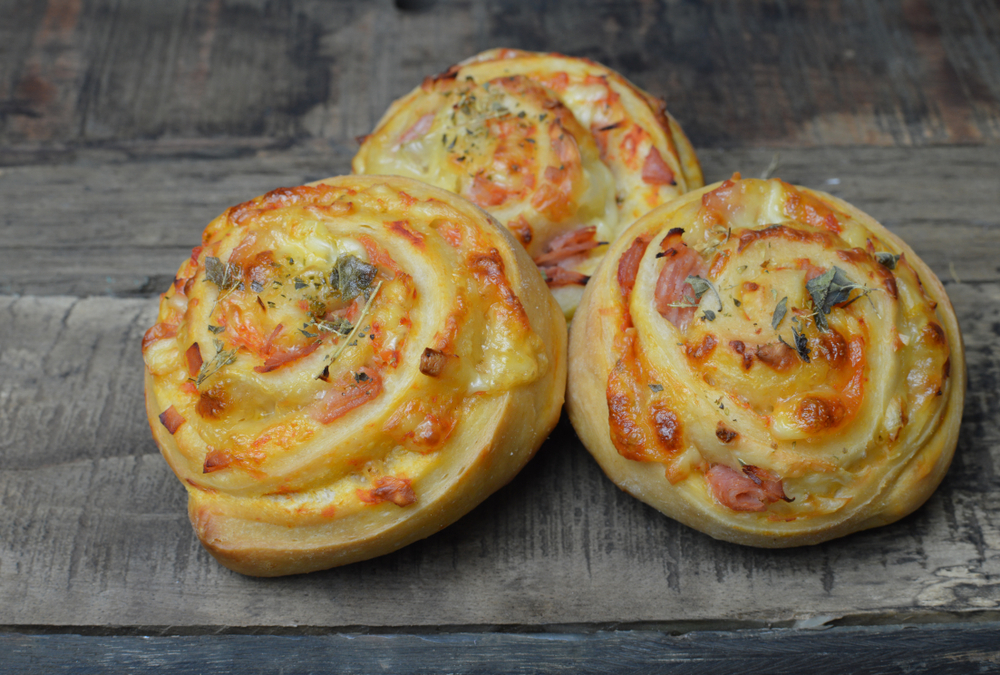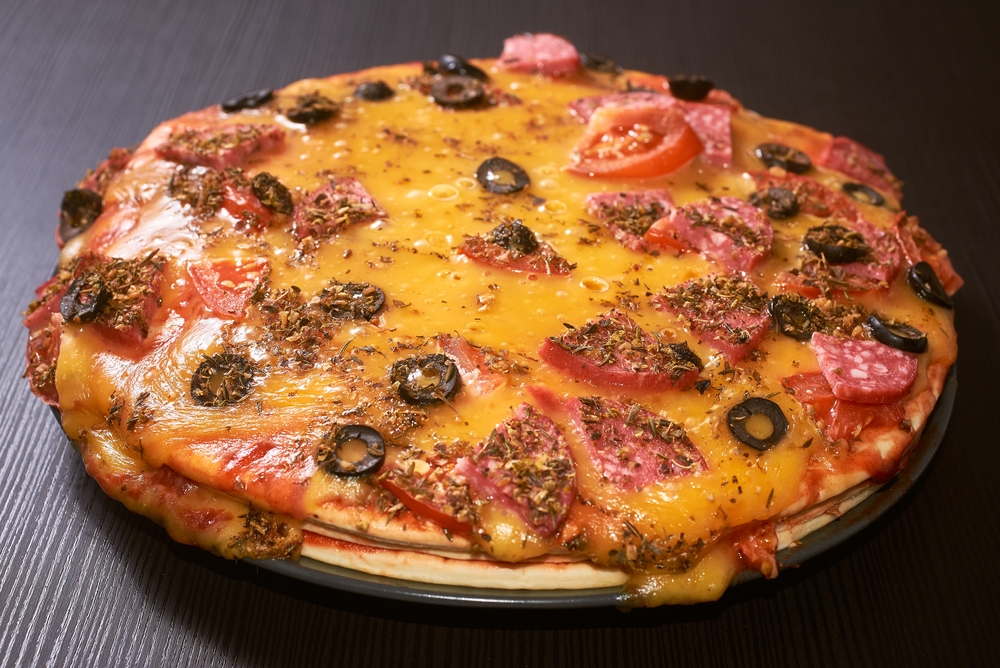An Italian ham kind called prosciutto has gained popularity recently. It is a dry-cured ham with a delicate, sweet, and salty flavor that is often served thinly sliced. The charcuterie meat prosciutto is frequently used in restaurants and specialized food shops.

Making prosciutto is a time-honored Italian family practice that has been passed down through the years. The ham is created from the pig’s hind leg and is salt-cured and air-dried for a number of months.
The outcome is a succulent and tasty beef that is ideal for pasta dishes, salads, and sandwiches.
If you enjoy Italian food, you have probably had prosciutto at some point. But it might be difficult to know where to begin if you are new to the world of cured meats.
We’ll cover all you need to know about prosciutto in this post, from its origins to its preparation and consumption methods.
In order to discover more about this delectable Italian ham, whether you are a seasoned prosciutto fan or a curious beginner, read on.
What is Prosciutto?
Prosciutto is a type of Italian cured ham that is highly prized for its rich, savory flavor and tender texture.
It is a staple of Italian cuisine and is used in a wide variety of dishes, from antipasti to pasta sauces to pizza toppings.

Definition
Prosciutto is made from the hind leg of a pig, which is salt-cured and air-dried for several months.
The curing process involves rubbing the meat with a mixture of salt and other spices, such as pepper and garlic, and then hanging it to dry in a controlled environment.
This allows the meat to slowly lose moisture and develop its distinct flavor and texture.
There are two main types of prosciutto: prosciutto crudo, which is raw and uncooked, and prosciutto cotto, which is cooked.
Prosciutto crudo is the most common type and is often sliced thinly and served as deli meat or as part of a charcuterie board.
Prosciutto cotto, on the other hand, is typically cooked and served warm, often as a main course or as part of a sandwich.
History
The history of prosciutto can be traced back to ancient Rome, where it was known as Perex scutum.
The art of curing and preserving meat was highly valued in ancient Rome, and prosciutto quickly became a popular food among the wealthy and the upper classes.
Over time, prosciutto evolved into a staple of Italian cuisine, with each region of Italy developing its own unique style of production.
Today, prosciutto is produced in many different regions of Italy, each with its own distinct flavor and texture.
In recent years, prosciutto has become increasingly popular outside of Italy, with many chefs and home cooks incorporating it into their recipes.
Whether you are looking for a tasty addition to your next charcuterie board or a flavorful ingredient for your favorite pasta dish, prosciutto is sure to please.
How is Prosciutto Made?
At its core, prosciutto is a type of cured ham made from the hind leg of a pig. However, the process of making prosciutto is far from simple.
In this section, we will explore the ingredients and techniques used in the curing and aging process of this beloved Italian delicacy.

Ingredients
The main ingredient in prosciutto is, of course, the pig’s hind leg. However, the quality of the pig and the way it is raised can have a significant impact on the final product.
For example, prosciutto di Parma is made from pigs raised in a specific region of Italy, while prosciutto di San Daniele is made from pigs raised in a different region.
The pigs used for prosciutto are typically fed a specific diet and are raised without antibiotics or hormones.
In addition to the pig’s hind leg, the other key ingredient in prosciutto is salt. The salt is used to cure the meat and prevent the growth of bacteria.
Other ingredients, such as sugar, spices, and nitrites, may also be used to enhance the flavor and appearance of the prosciutto.
Curing Process
The curing process for prosciutto typically involves first rubbing the pig’s hind leg with salt. The salt draws out moisture from the meat, which helps to prevent the growth of bacteria.
The amount of salt used and the length of time the meat is cured can vary depending on the type of prosciutto being made.
After the initial salting, the meat is typically washed and then hung to dry. During this time, the meat continues to lose moisture and the flavor becomes more concentrated.
The length of the drying period can also vary depending on the type of prosciutto being made.
Aging Process
Once the meat has been dried, it is then aged. The length of the aging process can vary depending on the type of prosciutto being made.
For example, prosciutto di Parma must be aged for at least 12 months, while prosciutto di San Daniele must be aged for at least 13 months.
During the aging process, the meat develops its distinctive flavor and texture. The fat in the meat breaks down, which gives the prosciutto its melt-in-your-mouth texture.
The aging process also helps to develop the complex flavors that Prosciutto is known for.
The process of making prosciutto is a complex and time-consuming one. However, the result is a delicious and beloved Italian delicacy that is enjoyed around the world.
Types of Prosciutto
When it comes to prosciutto, there are various types available, each with its unique flavor and texture. In this section, we will explore the most popular types of prosciutto.

Prosciutto di Parma
Prosciutto di Parma is one of the most famous and beloved types of prosciutto. It is made from the hind legs of specially bred pigs that are raised in a specific region of Italy.
The pigs are fed a diet of whey and grains, which gives the meat its distinctive flavor. After being salted and cured for several months, the prosciutto is ready to be sliced and enjoyed.
Prosciutto di Parma is protected by the PDO (Protected Designation of Origin) label, which means that only prosciutto made in the Parma region of Italy can be labeled as such. This ensures that the prosciutto is of the highest quality and produced using traditional methods.
Prosciutto di San Daniele
Prosciutto di San Daniele is another popular type of prosciutto that is protected by the PDO label. It is made in the Friuli-Venezia Giulia region of Italy and is known for its sweet and delicate flavor.
The pigs used to make Prosciutto di San Daniele are raised in a specific area and are fed a diet of grains and whey.
The curing process for Prosciutto di San Daniele is similar to that of Prosciutto di Parma, but the prosciutto is aged for a shorter period. This gives it a softer texture and a milder flavor.
Other Varieties
While Prosciutto di Parma and Prosciutto di San Daniele are the most well-known types of prosciutto, there are several other varieties worth trying. Here are a few:
- Prosciutto di Modena: Made in the Modena region of Italy, this prosciutto is known for its sweet and nutty flavor.
- Prosciutto Toscano: This prosciutto is made in Tuscany and has a slightly saltier taste than other types of prosciutto.
- Prosciutto di Carpegna: This prosciutto is made in the Carpegna region of Italy and is known for its intense flavor.
No matter which type of prosciutto you choose, it is sure to be a delicious addition to any meal. From antipasti platters to pasta dishes, prosciutto is a versatile ingredient that can add flavor and depth to any recipe.
Prosciutto in Italian Cuisine
Prosciutto is a staple ingredient in Italian cuisine. It is a dry-cured ham that is thinly sliced and served uncooked.

Prosciutto is used in a variety of dishes, from pasta and pizza to salads and antipasti platters. In this section, we will explore the different ways prosciutto is used in Italian cuisine, including recipes and pairings.
Recipes
Prosciutto is a versatile ingredient that can be used in a variety of recipes. Here are some classic Italian dishes that feature prosciutto:
- Prosciutto e Melone: This simple dish features slices of prosciutto wrapped around sweet cantaloupe melon. It is a refreshing appetizer that is perfect for summer.
- Prosciutto e Fichi: Figs and prosciutto are a classic pairing in Italian cuisine. This dish features ripe figs wrapped in prosciutto and grilled until the prosciutto is crispy.
- Pasta with Prosciutto and Cream: This rich and decadent pasta dish features prosciutto, cream, and Parmesan cheese. It is a comforting dish that is perfect for a cozy night.
- Pizza with Prosciutto and Arugula: Prosciutto and arugula are a classic pizza topping combination. The salty prosciutto pairs perfectly with the peppery arugula.
Pairings
Prosciutto pairs well with a variety of flavors and ingredients. Here are some classic pairings:
- Cheese: Prosciutto pairs well with a variety of cheeses, including Parmesan, mozzarella, and goat cheese.
- Melon: Sweet melon is the perfect foil for salty prosciutto. Try wrapping slices of prosciutto around cubes of cantaloupe or honeydew for a refreshing appetizer.
- Vegetables: Prosciutto pairs well with a variety of vegetables, including asparagus, artichokes, and roasted red peppers.
- Herbs: Sage and basil are classic herbs that pair well with prosciutto. Try wrapping sage leaves in prosciutto and frying until crispy.
- Tomato: Prosciutto and tomato are a classic pairing in Italian cuisine. Try topping slices of ripe tomato with a slice of prosciutto and a drizzle of olive oil.
Prosciutto is a versatile ingredient that can be used in a variety of dishes. Whether you are making a simple appetizer or a decadent pasta dish, prosciutto is sure to add depth and flavor to your recipe.
Prosciutto Around the World
When it comes to prosciutto, the Italian version is the most well-known. However, this delicious cured ham is enjoyed around the world, with different variations and preparations depending on the region.

In this section, we will explore the different types of prosciutto found in North America, Europe, and other regions.
North America
In North America, prosciutto is typically made using the same methods as the Italian version. However, due to regulations, it is often labeled as “prosciutto-style ham” or “Italian-style ham.”
Prosciutto-style ham is typically made from the hind leg of the pig, which is salt-cured and air-dried for several months. It is then sliced thinly and served as an appetizer or used in recipes.
Europe
In Europe, prosciutto is produced in various regions, each with its own unique flavor and texture. The most famous prosciutto is Italian prosciutto, which is made in two regions: Parma and San Daniele.
The Parma version is salt-cured for several months and then air-dried for at least a year, while the San Daniele version is aged for a minimum of 13 months. Other European countries also produce their own versions of prosciutto, such as the Spanish jamón ibérico and the Portuguese presunto.
In addition to these well-known varieties, there are also lesser-known prosciutto variations from regions such as Friuli Venezia Giulia in northeastern Italy. This type of prosciutto is made using a unique smoking process that gives it a distinct flavor.
Other Regions
Prosciutto is also enjoyed in other regions around the world, such as South America and Asia. In South America, prosciutto is often used in traditional dishes such as empanadas and asado.
In Asia, prosciutto is becoming increasingly popular, with many restaurants serving it as an appetizer or incorporating it into dishes such as sushi rolls.
Conclusion
Prosciutto is a versatile and delicious cured ham that is enjoyed around the world. Whether you are looking for the classic Italian version or a unique variation from a lesser-known region, there is a prosciutto out there for everyone.
Conclusion
Prosciutto is a delicious and versatile ingredient that can be used in a variety of dishes. It has a sweet, meaty flavor with a pleasant edge of saltiness and a buttery texture that melts in the mouth.
When buying Prosciutto, it is important to look for a ham that is aged for at least 12 months to get the best flavor and quality.
Some varieties are seasoned with spices and herbs like black pepper, garlic, juniper, and rosemary, which give it a more unique, fragrant flavor.
Prosciutto is also a healthy and low-calorie option, making it an excellent choice for those on a weight-loss diet. It is a good source of protein and contains essential vitamins and minerals like iron and zinc.
Prosciutto is a delicious and nutritious ingredient that can be used in a variety of dishes. Whether you are making a sandwich, salad, pasta, or pizza, Prosciutto is a great way to add flavor and texture to your meals.







Add comment